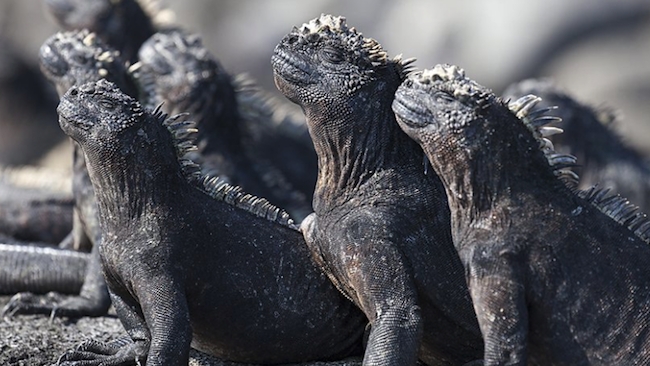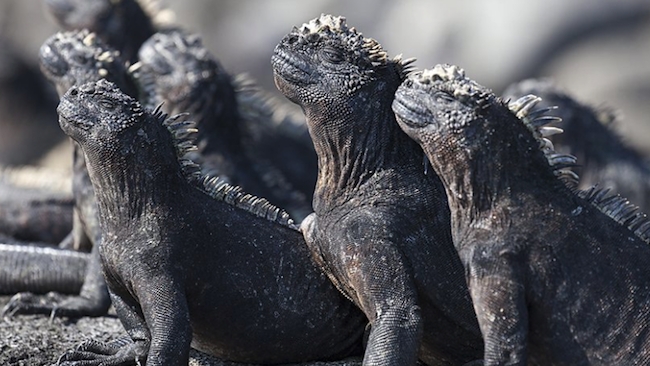
 Iguanas basking in the sun. But is that a 4K sun or an uprezzed one?
Iguanas basking in the sun. But is that a 4K sun or an uprezzed one?
RedShark Replay: Eagle-eyed observers of the BBC’s latest natural history opus, Planet Earth II, will have noticed some non-4K kit being used in the ‘making of’ segments. So, was it shot in 4K or wasn’t it?
Have you seen Planet Earth II yet? If you have, unless you were part of the team that produced it, despite all the noise about its higher resolutuion you probably haven’t seen it in 4K. It might have been shot with four times the number of pixels per frame than its predecessor but, as far as we’re aware, it’s not available for home consumption yet in anything above Full HD.
Ironically I watched it on my ten year old 40” Sony Bravia Full HD TV that still shows a wonderful picture, and which I was persuaded to buy a decade ago by the prospect of watching Planet Earth Series 1! The iconic series had been shot in HD and looked (and still does) absolutely wonderful.
A lot has changed since then. We have 4K. Cameras are better in low light. We have drones and amazing gimbals that let camera operators walk amongst dangerous animals. They’re still likely to get eaten but at least the camera doesn’t shake.
What many people don’t realise is that their assumption that the first series from ten years ago was shot largely on Sony gear is wrong. It wasn’t. It was largely shot with Panasonic cameras and at the time, Panasonic didn’t do 1080. 720p was the best that the famous Varicams could manage. But it didn’t matter, because the footage looked amazing. Arguably 720p/60 has only ten percent less information than 1080i/30. I’m willing to bet that this distinction didn’t cross anyone’s minds as they were watching the pictures.
And nor would it have occurred to anyone that in the cold light of the Antarctic not all of Planet Earth II’s footage was shot in 4K. You absolutely couldn’t tell by looking at it. I only know this because during the “Diaries” segment at the end of the show, I saw one of the camera operators carrying an ARRI Amira: an outstanding camera that resolutely does not have a 4K sensor.
So have we been misled by the BBC?
I don’t think so, for several reasons.
First, as far as I can see, the venerable British broadcaster has never claimed that Planet Earth II was made in 4K: only that it will be delivered in the super high resolution.
This isn’t just playing with words. The pictures from ARRI cameras using their now six year old sensor are still as good as they ever were, which is to say that they look amazing. Let’s put it this way: one of the best-looking films I’ve ever seen is Life of Pi - shot with an ARRI Alexa, the Amira’s older sibling.
The Amira can up-res its own footage to 4K. It does this extremely well. A big advantage of using a lower resolution sensor is that you capture more light per pixel and the picture is visibly better in all respects other than ultimate sharpness.
What you see on the screen is simply a great picture. Your mind doesn’t categorize it as “4K ” or anything else for that for that matter. That’s because you’re too busy watching the gorgeous images.
None of this means that I think 8K is irrelevant or over-the-top: far from it. But I do think that if you pick a camera and then do your absolute best with it, you’re unlikely to be disappointed by the resolution.
Tags: Production


Comments